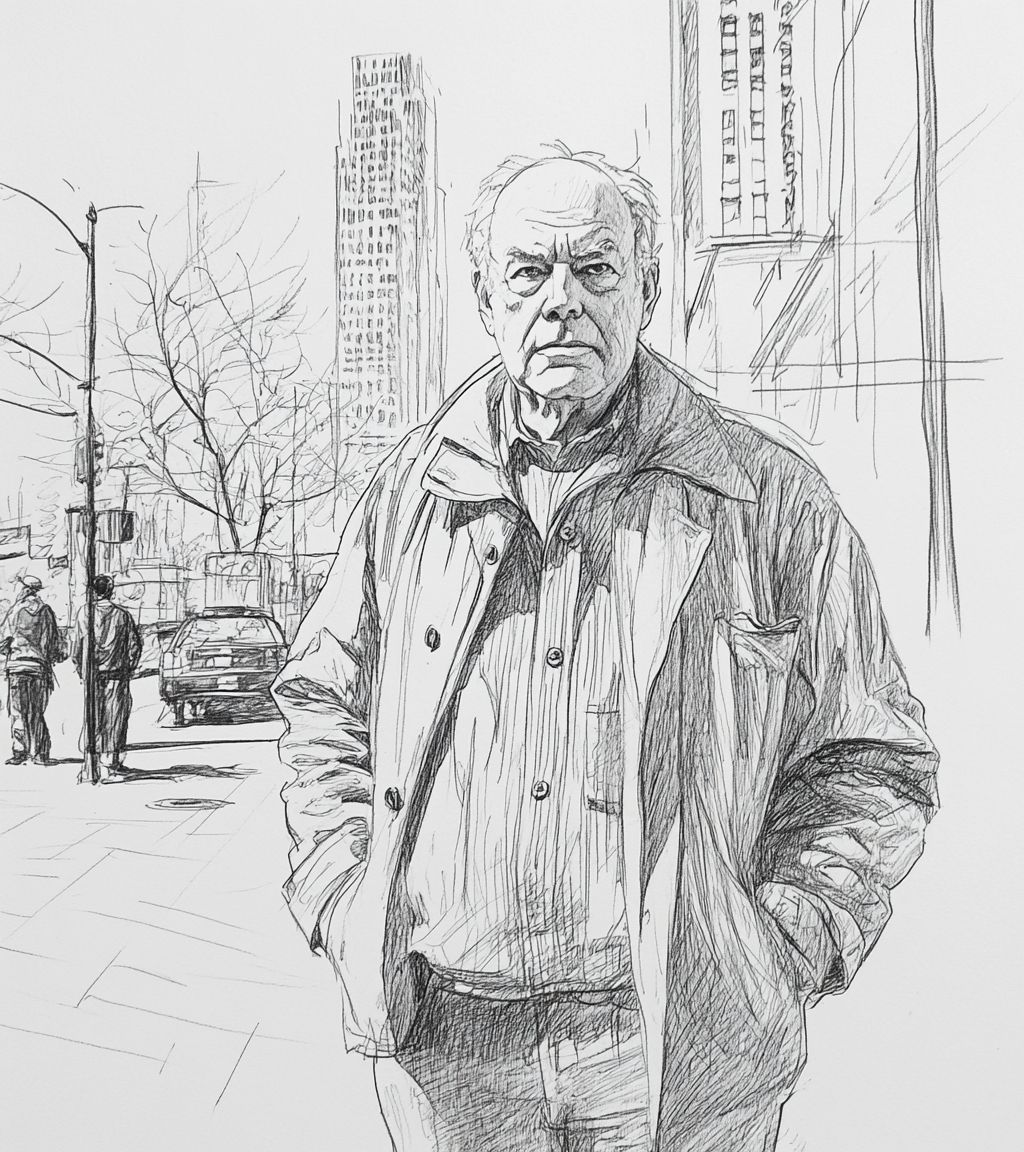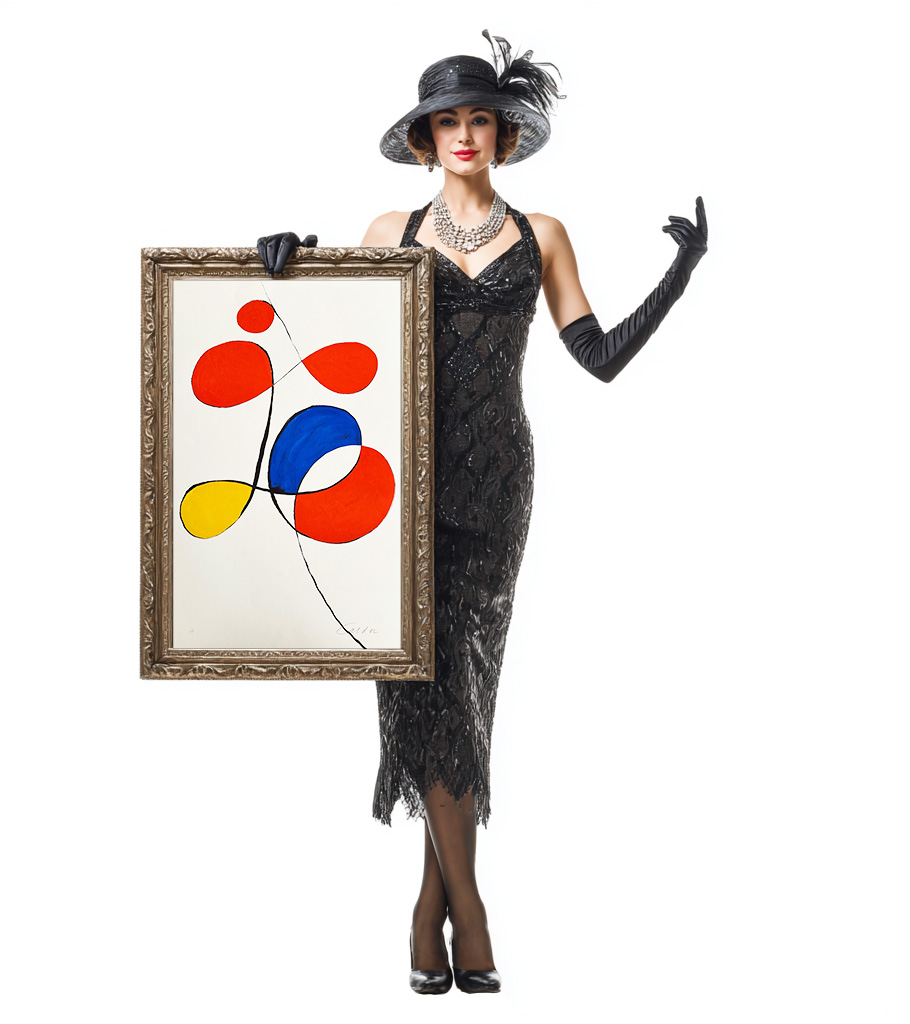
Alexander Calder
Alexander Calder was an American sculptor born into a family of artists. Initially trained as a mechanical engineer, Calder later shifted to art, studying at the Art Students League in New York. His early career included illustration work and painting, but he soon became known for his innovative approach to sculpture. He left behind a transformative legacy in modern art.
Calder is best known for pioneering the mobile — kinetic sculptures that move with air currents — and the stabile, his stationary abstract forms. His style combined engineering precision with artistic creativity, often featuring bright primary colors, wire constructions, and a sense of playful motion. Calder's work bridged the gap between sculpture and performance, blending balance, movement, and abstract form in a completely new way.
Among his most famous works are Lobster Trap and Fish Tail (1939), one of the first large-scale mobiles, and La Grande Vitesse (1969), a monumental stabile installed in Grand Rapids, Michigan. Calder exhibited widely during his lifetime, including major solo shows at the Museum of Modern Art in New York and the Tate Gallery in London. His work continues to be celebrated in retrospectives around the world, underscoring his role as a key figure in 20th-century sculpture.
Collected by major institutions and notable private collectors:
— National Gallery of Art (Washington, D.C.)— The Metropolitan Museum of Art
— Tate
— Centre Pompidou
— Stedelijk Museum
Notable sales and auction records:
— Poisson volant (Flying Fish), USD 25,9 million at Christie's, New York, 2014— Untitled, USD 19,6 million at Sotheby's, New York, 2021
— Lily of Force, USD 18,5 million at Christie's, New York, 2012
Artworks and Paintings
Biography and Artistic Career Highlights
Alexander Calder was born on July 22, 1898, in Lowell, Pennsylvania, USA, into a family of artists: his father and grandfather were sculptors, and his mother was a portrait painter. He grew up in an artistic environment but showed an early interest in technology and engineering. In his youth, he lived in different cities due to his father’s work, which gave him broad life experience.
1915 — entered the Stevens Institute of Technology in Hoboken, where he studied mechanical engineering.
1919 — graduated from the institute with a degree in mechanical engineering. Worked for some time in his profession.
1923 — entered the Art Students League in New York, where he began serious artistic training.
1925 — his first illustrations were published in newspapers and magazines.
1926 — moved to Paris, created a miniature circus out of wire and fabric (“Cirque Calder”), which became a famous artistic performance.
1927 — held his first solo exhibition in Paris.
1930 — met Piet Mondrian, an encounter that strongly influenced the formation of Calder’s abstract style.
1931 — joined the group “Abstraction–Creation”; began his first experiments with moving sculptures.
1932 — the term “mobile” (from French *mobile*), coined by Marcel Duchamp, was introduced to describe his kinetic sculptures.
1933 — returned to the United States, worked in Roxbury, Connecticut.
1940s — gained international recognition, participated in exhibitions in Europe and America, created large-scale sculptures for public spaces.
1943 — retrospective exhibition at the Museum of Modern Art in New York.
1950s — worked on monumental “stabiles” (stationary sculptures), designed buildings and public squares.
1960–1970s — created major projects for Chicago, Montreal, Paris, and New York. Calder’s sculptures became symbols of urban spaces.
1966 — major retrospective at the Guggenheim Museum in New York.
1976 — completed several large commissions in France and the United States.
On November 11, 1976, Alexander Calder died in New York of a heart attack. His work had a tremendous impact on the development of kinetic art and monumental sculpture in the 20th century.

